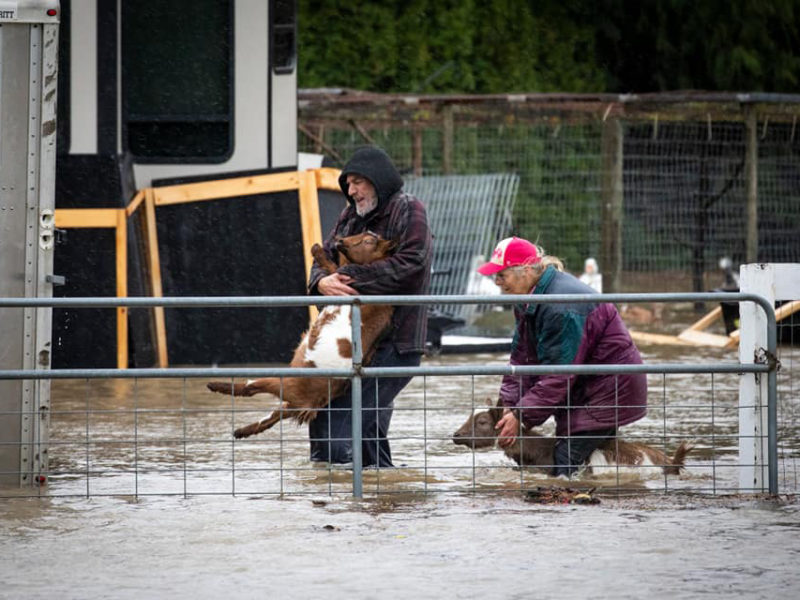The flood waters are receding but the toll of what the province has dubbed “the worst weather storm in a century” is rising, with Abbotsford pointing to heavy losses of livestock on Sumas Prairie.
“I saw barns half-full of water,” Abbotsford Mayor Henry Braun said on Wednesday morning, following a flyover of the area on Tuesday. “I can’t imagine there are any birds left alive.”
However, he also cautioned, “We have no numbers.”
An atmospheric river dumped well over 200mm on the eastern Fraser Valley between Saturday and Monday, double what usually falls in November. It followed heavy rains in September and October which also delivered double what the region usually sees during those months.
The result was flooding, washouts and hardship for BC farmers and ranchers across the South Coast and into the Nicola Valley as rapidly rising waters inundated farms and cut critical infrastructure. Tuesday dawned with 24 highway closures in place. The BC Milk Marketing Board suspended milk pick-ups until further notice in large parts of the Fraser Valley east of Sumas Way in Abbotsford; Agassiz east of Mountain Water Harrison Way; as well as in the Interior, Prince George, Bulkley Valley and Smithers. Producers were asked to record and report volumes but then dump the milk into their manure pits. More than 80% of the province’s milk was not picked up.
On Tuesday night, Abbotsford issued an immediate evacuation order for Sumas Prairie due to waters from the Nooksack River threatening the Barrowtown pump station. The station’s four pumps were functioning at full tilt but the risk of a failure overnight demanded immediate action. Close to 200 properties are affected, many of them farms. The evacuation zone has about 300 residents.
“I know it’s hard for farmers to leave their livestock but people’s lives are more important right now than livestock or chickens,” Mayor Henry Braun said in a hastily called press conference at 9pm.
A rancher himself, Braun sympathized with farmers trying to save their livestock but said, “life is more important.” While the danger had receded by Wednesday morning, Braun made clear that it was not over as the Fraser River had to drop another metre before floodgates could be opened to relieve the pressure on Barrowtown.
At its peak on Tuesday, the Fraser River was at more than 6.3 metres.
The ongoing disruption to transportation networks has complicated matters, preventing farmers from leaving and making feed deliveries impossible. Some have left, saving their families but not their livestock.
BC Ministry of Agriculture, Food and Fisheries staff have been scrambling to secure information, working with producer groups to assess impacts and provide support. But many farmers have taken matters into their own hands, and the ministry says it hasn’t received any requests to relocate livestock.
According to the BC Egg Marketing Board, more than 60 farms are in the Sumas Prairie evacuation zone between Abbotsford and Yarrow. There are also 59 dairy farms under evacuation orders.
“We are also concerned about the fact that the Lower Mainland is cut off from the rest of the province by road,” added BC Egg’s director of marketing and communications Amanda Brittain. “The major concerns are getting feed to farms, transporting animals, and picking up finished products like eggs.”
The disruptions to the province as a whole underscore the warnings issued regarding the consequences of catastrophic spring flooding, a more familiar worry for producers.
According to the Fraser Basin Council, the direct impact to Fraser Valley agriculture of flooding similar to the 1894 freshet would approach $1 billion, with a total economic impact of more than $3 billion. While this flood is not on that scale, thanks to dyking and drainage infrastructure, the impact both within the Fraser Valley and across the province promises to be significant.


 Cedar Valley licence reinstated
Cedar Valley licence reinstated